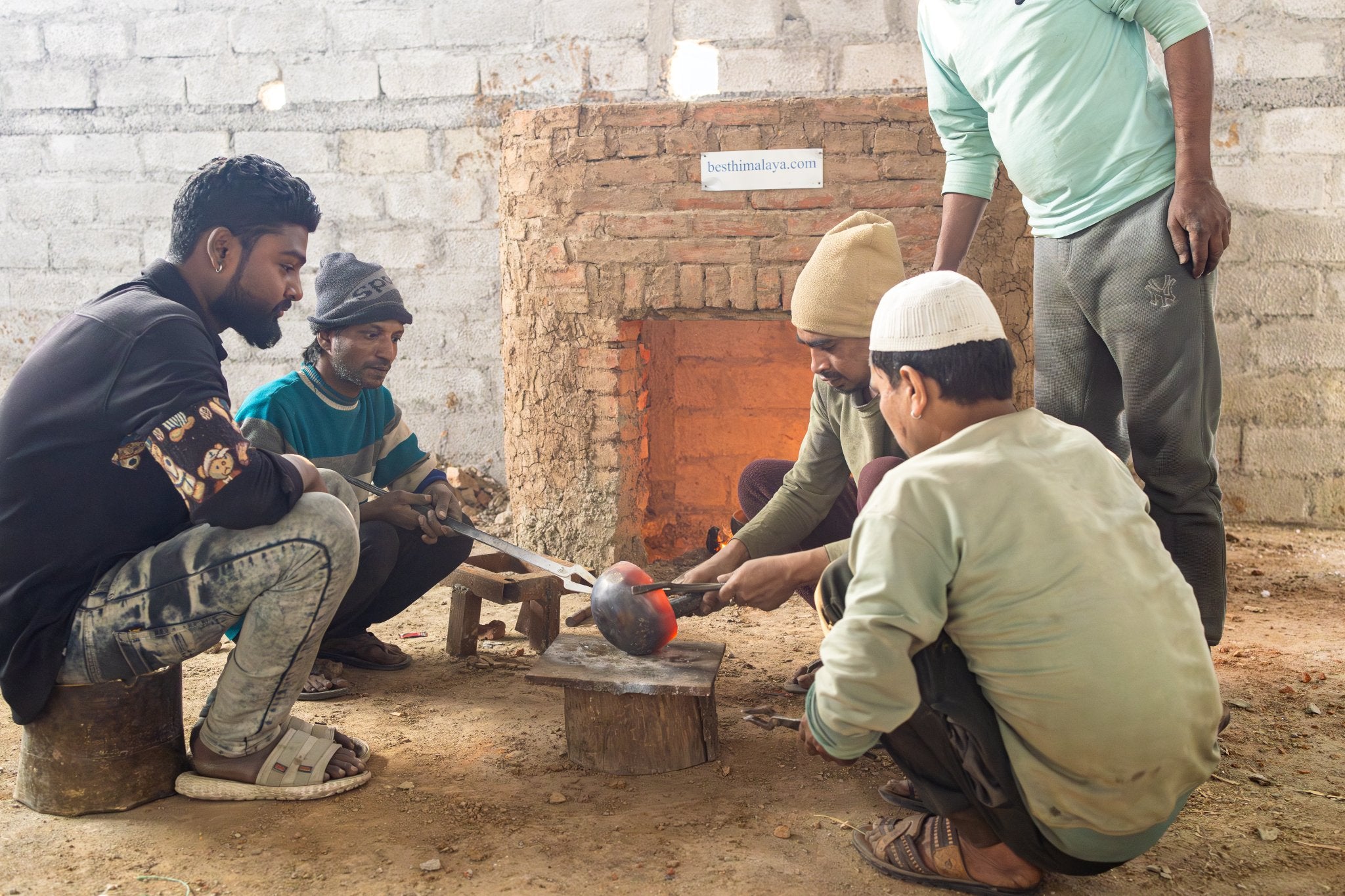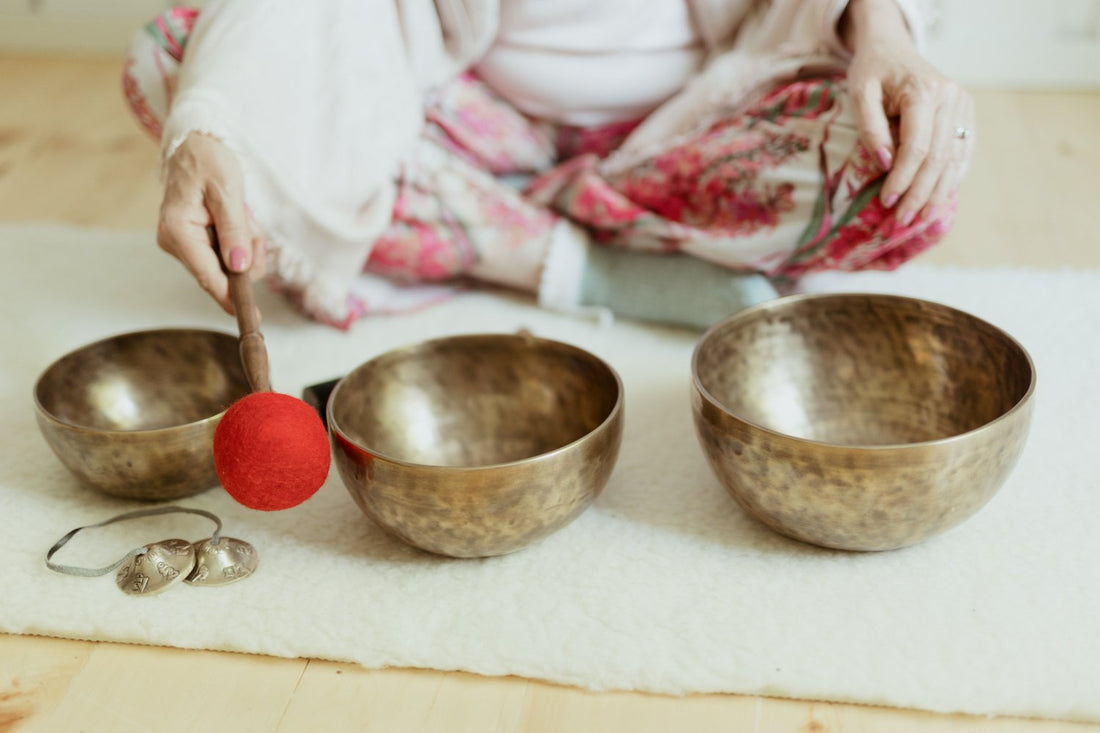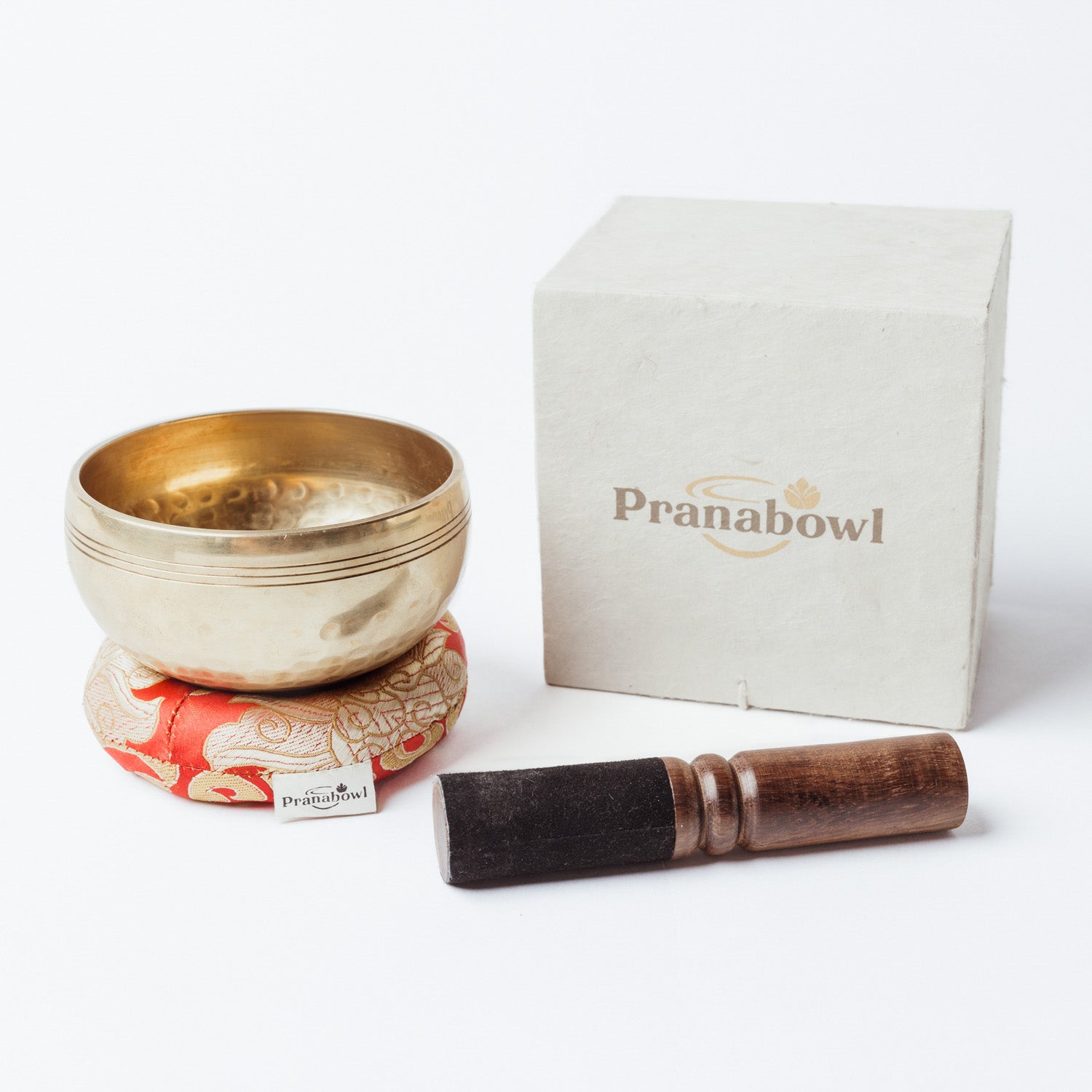The making of singing bowls is a centuries-old tradition
The making of Tibetan singing bowls is a centuries-old craft that combines expertise, spiritual tradition and an understanding of sound vibrations. Traditional hand-hammered singing bowls are made from a bronze alloy of approximately 73% copper, 25% tin and 2% zinc. Pranabowl singing bowls are made in origins of singing bowl, respecting centuries-old traditions. This unique craftsmanship has been passed down through generations, creating high-quality singing bowls.
According to some legends, the bowls are made of seven metals. The seven metals often mentioned are: gold, silver, copper, tin, iron, mercury, and lead. There are two major theories behind the idea of the seven metals. One theory is that these represent the seven planets known to the ancients. The other theory is that these seven metals are derived from sacred minerals and metals of the region.
However, this has been shown to be mostly a myth, as tests on singing bowls have not found any significant amounts of these metals. However, there are rumors that some manufacturers may add very small amounts of various metals to keep these claims alive. However, the amount is structurally insignificant.
Manufacturing requires professional skills
In production, the metal alloy of the sound bowls is melted and cast into a round disc, from which the actual forging process begins. The hot metal disc is forged by hand with hammers – often in collaboration with several craftsmen – slowly and carefully until the round shape of the bowl is created. Each hammer blow has its own meaning: they shape both the external shape of the bowl and its internal resonance.
This slow and meditative way of working allows the end result to be a sounding instrument that carries a deep, multi-layered sound and strong vibration. The bowl is cooled, cleaned and finished. The surface of the bowl is often left slightly rough to preserve its authentic look and sound.
Singing bowls can also be hand-cast from a single metal, brass. This allows for cost savings while still providing high-quality sound. Brass cast bells are more shiny and decorative in appearance.
Handmade with our heart
The vibration of a handmade singing bowl is felt strongly throughout the body. For this reason, handmade singing bowls are particularly popular in singing bowl therapies, meditation, and singing bowl relaxation.
The sound of a Tibetan singing bowl is not a coincidence, but the result of skill, silence, and countless hammer blows, all made by hand, with heart, and intention.







